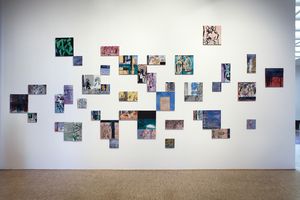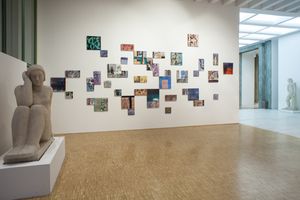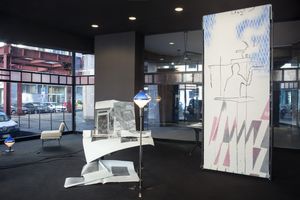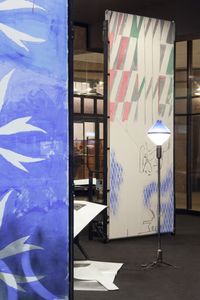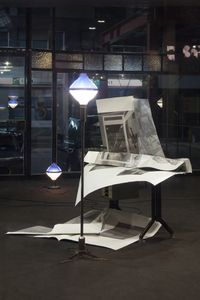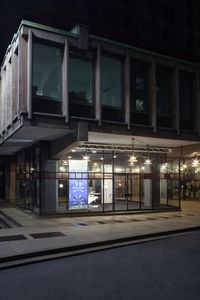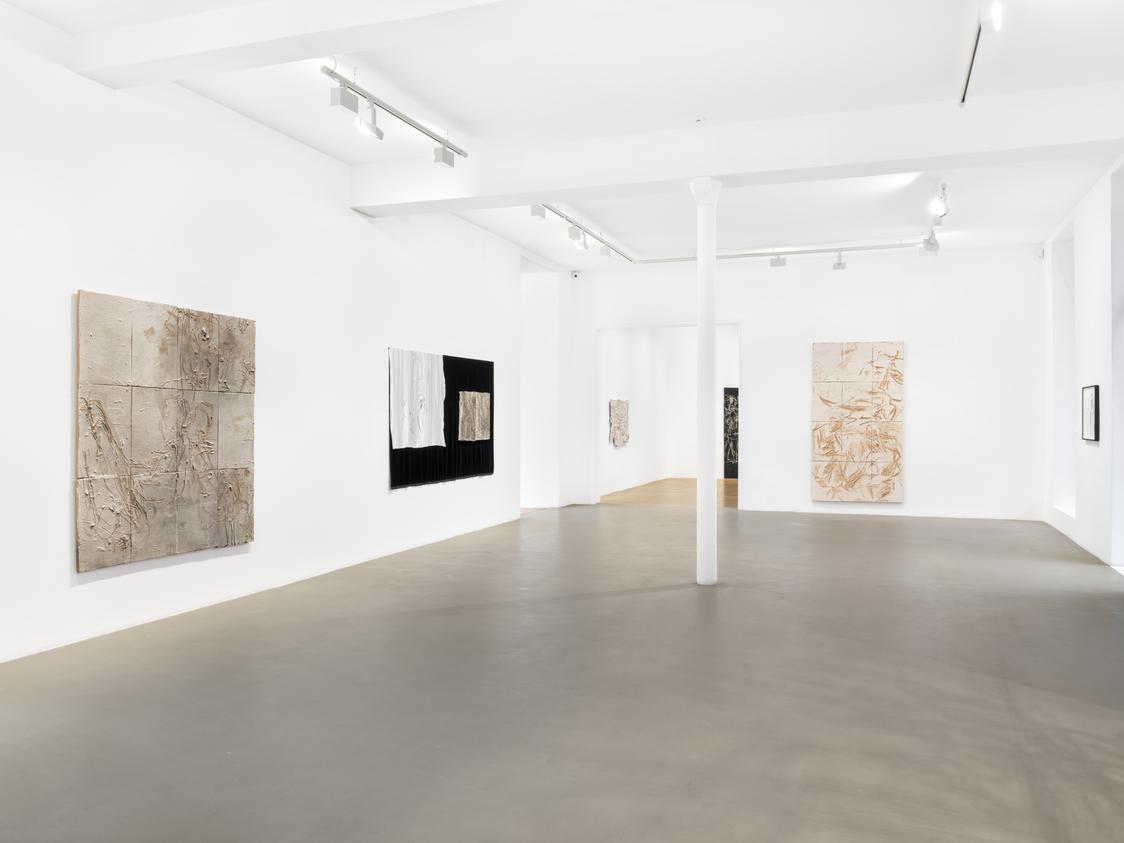Illuminated Window presented at the Triennale di Milano is the first solo exhibition in Italy of the American artist Nick Mauss. The exhibition begins in the atrium of the Triennale and continues through to the Torre Velasca, in the “Acquario” space on the ground floor, hosted by Urban Up Unipol Project Cities.
For the Triennale, Mauss realizes a site-specific oeuvre on an ample wall at the building’s entrance: a painting dispersed and/or recomposed in a sort of ceramic mural. The quadrangular and rectangular tiles do not entirely cover the surface of the wall, as in traditional murals, but are arranged as pieces of a puzzle that still has to be defined. At times, they are juxtaposed, other times, they only lightly touch each other, creating a graphic configuration made of recurrent colors. They do not follow a clear grid, and betray it if they do. Each of them maintain traces of a non-unitary design. Illustrated and illuminated by drafted and stratified drawings thanks to the various firing phases of the glazes; the ceramics have been realized in Faenza short before the inauguration of the exhibitions and simultaneously to a big public commission for the Building 66, designed by I.M. Pei in the campus of MIT in Cambridge (MA, USA). Painting on ceramics implies the desire to let the unforeseen emerge: the colors, in fact, are always different after the firing and glue does not protect with precision the underlying drawing.
For the Torre Velasca, Mauss designs a metaphorical stage, a special visual frame for the exhibited works — all made from different materials — as if they were the characters of a mise-en-scène. Some works are illuminated or sustained by an ornamental repertoire realised by the Studio BBPR who designed the tower in the aftermath of World War II. The decor supports and illuminates the work, but also suggests a domestic setting that makes tangible the absence of a human presence. Nevertheless, this glass and metal perimeter also contains the movement offered by two paintings that keep rotating like advertising panels. The paintings, like the tiles displayed at the Triennale, contain motifs that follow each other elsewhere, on hung and intertwined fabric drapes and on the crumpled pile of drawings that irrupt the space. They do not hide but, on the contrary, can be seen from different perspectives. In these reflected surfaces even the reflection of the passing visitors of the tower on the background or on the foreground becomes part of the display.
Illuminated Window refers to an ideal visual perspective as well as an illustration. A window illuminated like a medieval manuscript, patiently mined with motifs, symbolisms and semiotic embellishments of graceful letters. It is lively and mysterious like the signs and passages staged by Mauss both on the ceramics dispersed at the Triennale and at the entrance space of Torre Velasca. “I intend the choreography,” says the artist: “as a way to organize and rearrange, to work with materials in time, to find new forms and sequences, and to revive historical materials in the present.”
plus